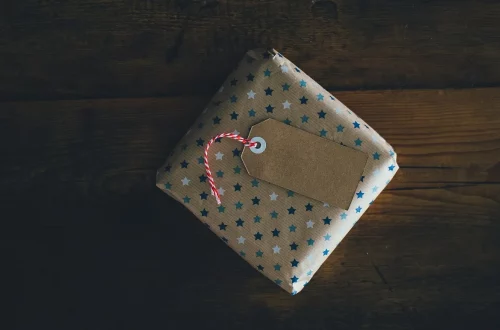
How to Care for Your Dog’s Cut Paw Pad Effectively
Taking care of a beloved pet is a responsibility that brings immense joy but also requires diligence and knowledge. Among the various challenges that dog owners face, injuries to a dog’s paw pads can be particularly distressing. Paw pads are essential for a dog’s mobility, comfort, and overall well-being. They provide cushioning and protection while allowing dogs to navigate a variety of terrains. However, due to their exposed nature, paw pads can easily sustain cuts or abrasions from sharp objects, hot pavement, or rough surfaces.
When a dog suffers a cut to its paw pad, it can be a painful experience for both the pet and the owner. Observing your furry friend in discomfort can be heart-wrenching, and knowing how to respond appropriately is crucial. Proper care and timely treatment can prevent further complications and ensure a swift recovery. Understanding the anatomy of a dog’s paw pad and the potential causes of injuries is vital for any dog owner. Moreover, providing the right environment and care can help minimize the risk of future injuries.
In this article, we will explore essential steps and considerations in effectively caring for your dog’s cut paw pad. This comprehensive guide will equip you with the knowledge to handle this common issue with confidence and compassion.
Assessing the Severity of the Injury
Before taking any action, it is essential to assess the severity of your dog’s paw pad injury. The first step is to carefully examine the cut. Look for signs of bleeding, swelling, or infection. If the cut is superficial and only results in minor bleeding, it may be manageable at home. However, if you notice excessive bleeding, deep wounds, or signs of infection such as pus or a foul odor, it’s crucial to seek veterinary assistance immediately.
When assessing the injury, gently clean the area around the cut with mild soap and water. Avoid using alcohol or hydrogen peroxide, as these can further irritate the sensitive skin of the paw pad. After cleaning, observe your dog’s behavior—are they limping, avoiding putting weight on the paw, or exhibiting signs of pain when you touch it? These behavioral cues can help you gauge the seriousness of the injury.
If the cut is minor, you can proceed with basic first aid. However, if the injury appears severe or if it doesn’t improve within a couple of days, a visit to the veterinarian is essential. Remember, it’s always better to err on the side of caution when it comes to your pet’s health.
First Aid for Minor Cuts and Abrasions
For minor cuts and abrasions, providing first aid at home can significantly aid in the healing process. Start by cleaning the wound as mentioned earlier, using lukewarm water and gentle soap. After cleaning, pat the area dry with a clean cloth. It’s essential to minimize further irritation, so avoid using any harsh chemicals or ointments unless specifically recommended by a veterinarian.
Once the area is clean and dry, you can apply an antiseptic solution designed for pets. There are many over-the-counter options available, but always check with your vet before using any new product. After applying the antiseptic, consider using a sterile bandage or non-adhesive gauze to protect the cut. This will prevent debris from entering the wound and allow it to heal without interference.
Be sure to monitor the bandage regularly, changing it as needed to keep the area clean and dry. Dogs are often prone to licking their wounds, which can introduce bacteria and slow healing. To prevent this, consider using an Elizabethan collar or a protective bootie designed for dogs. These products can help keep the paw clean while ensuring your dog stays comfortable.
Additionally, keep your dog calm and restrict their activity during the healing process. Avoid walks on hard surfaces and limit playtime that might aggravate the injury. With patience and proper care, minor cuts can heal effectively in a matter of days.
Preventing Future Paw Pad Injuries
Once your dog has recovered from a paw pad injury, taking preventive measures becomes essential to minimize the risk of future injuries. Understanding the common causes of paw pad cuts can help you create a safer environment for your pet.
One of the most significant contributors to paw pad injuries is walking on hot or rough surfaces. During hot weather, asphalt and concrete can become scorching and burn your dog’s paw pads. To avoid this, try to walk your dog during cooler times of the day, such as early morning or late evening. Additionally, consider investing in protective booties that can shield your dog’s paws from harsh surfaces.
Regular paw maintenance is also crucial. Check your dog’s paws frequently for signs of wear and tear, including cracks or foreign objects lodged between the pads. Regular grooming, including trimming the fur around the paws, can help prevent debris from accumulating and causing irritation.
Moreover, keeping your dog’s nails trimmed can reduce the risk of injuries. Long nails can affect a dog’s gait, making them more susceptible to cuts and scrapes on their paw pads. If you’re unsure how to trim your dog’s nails properly, consult your veterinarian or a professional groomer for guidance.
Finally, consider the environments where you take your dog for walks or playtime. Avoid areas with sharp debris, broken glass, or rough terrain. By being proactive and attentive, you can significantly reduce the likelihood of paw pad injuries in the future.
When to Seek Veterinary Care
While minor cuts can often be treated at home, there are specific situations in which seeking veterinary care is imperative. Any time you observe excessive bleeding that doesn’t stop after applying pressure for a few minutes, it is crucial to consult a veterinarian. Deep cuts that expose the underlying tissue or bone also require professional attention.
Other signs that indicate a need for veterinary care include persistent limping, swelling that doesn’t subside, or any signs of infection, such as redness, heat, or discharge from the wound. If your dog is excessively licking the injured paw despite protective measures, this could lead to further complications and should be addressed by a professional.
Furthermore, if you notice any changes in your dog’s behavior, such as lethargy, loss of appetite, or unusual vocalizations, these could signal more serious health issues. Always trust your instincts as a pet owner; if something doesn’t seem right, it’s better to consult your veterinarian for peace of mind.
In summary, caring for a cut paw pad requires vigilance, timely intervention, and knowledge of proper first aid techniques. While minor injuries can often be managed at home, understanding when to seek professional help is crucial for your dog’s well-being. Always keep an eye on your pet’s paws, implement preventive measures, and stay informed about their health.
**Disclaimer:** This article is not intended as medical advice. For any health concerns regarding your pet, please consult a qualified veterinarian.




